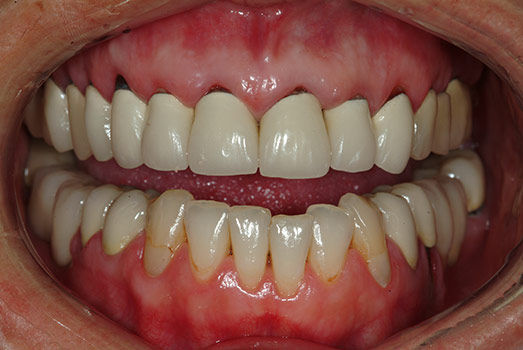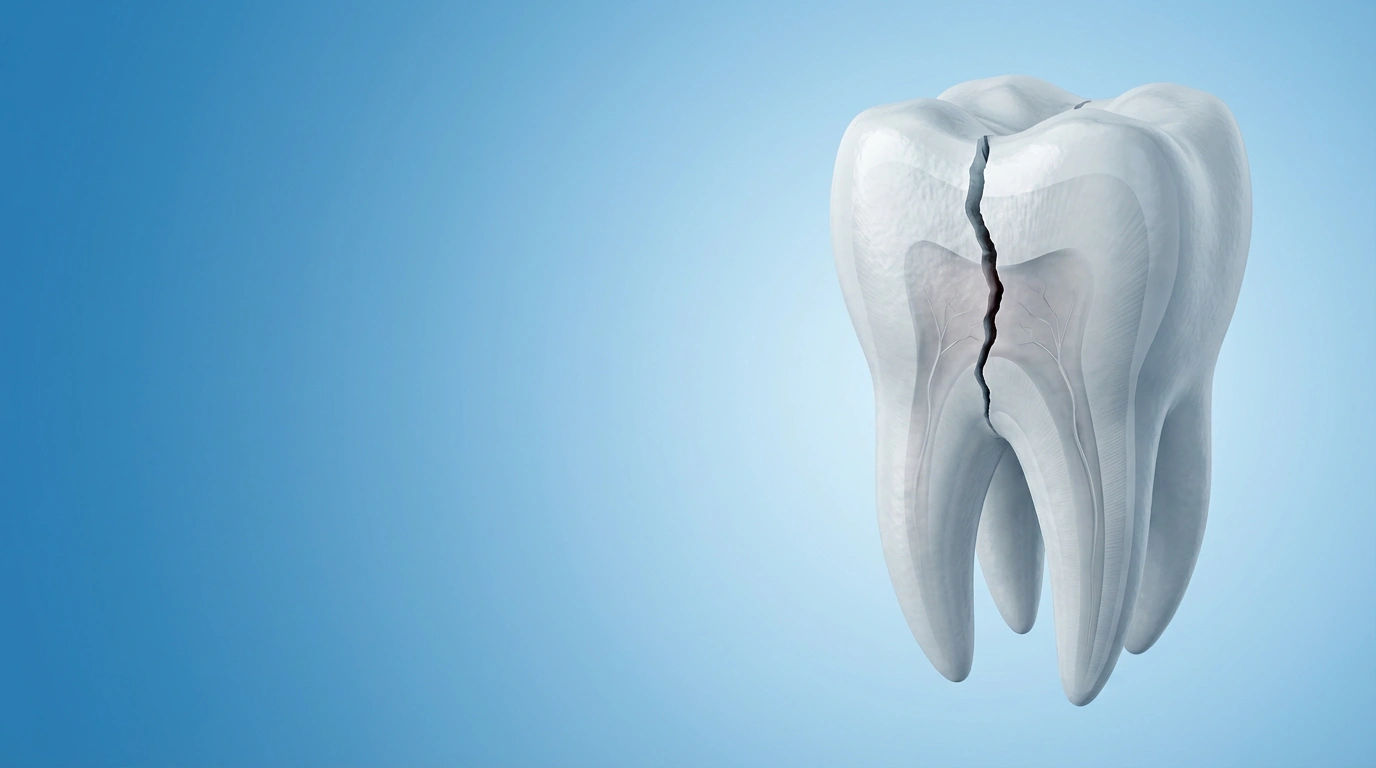How Does Tooth Decay Happen Under A Dental Crown?

Introduction
Dental crowns, also known as tooth caps, are common dental restorations used to restore damaged or decayed teeth. While they offer excellent protection and enhance the aesthetic appeal of the smile, it's important to understand that tooth decay can still occur underneath a dental crown. In this informative blog, we will delve into the process of tooth decay under a dental crown, exploring the causes, preventive measures, and factors influencing tooth cap cost. By the end, you'll be equipped with valuable insights to help you maintain a healthy smile and make informed decisions regarding dental crown treatments.
I. Understanding Tooth Decay under a Dental Crown
To understand how tooth decay occurs under a dental crown, it is crucial to be well acquainted with the structure of a dental crown and its placement procedure. A dental crown is a custom-made, tooth-shaped cap that covers the entire visible portion of a damaged or weakened tooth. It is typically crafted from materials such as porcelain, metal, or a combination of both.
1. Causes of Tooth Decay under a Dental Crown
Tooth decay under a dental crown can occur due to several factors. Understanding these causes can help individuals take preventive measures and seek timely dental intervention. Let's explore the primary causes of tooth decay under a dental crown:
A. Marginal Leakage:
When a dental crown is initially placed, it forms a tight seal with the natural tooth structure. However, over time, this seal can weaken or break down, leading to marginal leakage. Marginal leakage occurs when gaps or openings develop between the dental crown and the tooth's surface. These gaps can allow bacteria, food particles, and saliva to seep in, creating an ideal environment for decay-causing bacteria to thrive. Once the bacteria penetrate the underlying tooth structure, they can start eroding the tooth, leading to decay.
B. Poor Oral Hygiene:
Maintaining good oral hygiene is essential for oral health, including the preservation of dental restorations like dental crowns. Neglecting regular oral hygiene practices, such as brushing, flossing, and rinsing, can contribute to the development of tooth decay under a dental crown. When plaque accumulates on and around the dental crown, it can harbour bacteria that produce acids, which attack the tooth's enamel. Over time, this acid attack weakens the enamel and can result in decay.
C. Pre-existing Decay:
If a dental crown is placed over a tooth that already has existing decay, the decayed portion of the tooth may continue to progress underneath the crown if it is not properly treated before the crown placement. The decay can spread beneath the crown, compromising the underlying tooth structure and potentially leading to further complications.
D. Inadequate Tooth Preparation:
Before placing a dental crown, the affected tooth needs to be prepared by removing any decayed or damaged areas. If the tooth preparation is not thorough or the decayed portion is not completely removed, it can leave behind residual bacteria and decay-causing agents. This residual decay can continue to progress beneath the dental crown, ultimately leading to tooth decay.
E. Trauma or Fracture:
In some cases, trauma or fracture to the dental crown can create an entry point for bacteria. If the crown becomes chipped, cracked, or damaged, it can expose the underlying tooth structure to bacteria and debris, making it susceptible to decay. Therefore, it's important to address any damage to the dental crown promptly to prevent the onset of tooth decay.
2. Signs and Symptoms of Decay under a Dental Crown
Identifying tooth decay under a dental crown can be challenging since it is not easily visible. However, there are some signs that may indicate a problem, including:
- Sensitivity to hot or cold temperatures.
- Persistent pain or discomfort.
- Gum inflammation or swelling.
- Changes in the color or texture of the surrounding gum tissue.
3. Diagnostic Techniques
Dentists employ various diagnostic techniques to detect tooth decay beneath a dental crown, including:
- X-rays:
These images help reveal the extent of decay, the condition of the surrounding bone, and any signs of infection.
- Visual Inspection:
The dentist examines the crown and surrounding areas for signs of deterioration or damage.
II. Prevention and Treatment of Tooth Decay under a Dental Crown
Preventing tooth decay under a dental crown involves a combination of proactive measures and regular dental check-ups. Additionally, timely intervention can help preserve both the natural tooth structure and the dental crown.
1. Maintaining Good Oral Hygiene
Brushing your teeth at least twice a day with a fluoride toothpaste, flossing daily, and using an antimicrobial mouthwash can help eliminate plaque and reduce the risk of tooth decay. Pay special attention to the area where the dental crown meets the natural tooth.
2. Regular Dental Check-ups
Routine dental visits, typically every six months, are crucial for early detection and treatment of any underlying dental issues, including decay under a dental crown. Your dentist can evaluate the integrity of the crown, identify signs of decay, and recommend appropriate treatment if necessary.
3. Treating Decay under a Dental Crown
If tooth decay is detected beneath a dental crown, treatment options may include:
- Removal of Decay:
The decayed portion is carefully removed, and the affected area is thoroughly cleaned.
- Dental Filling:
A filling material is used to restore the void left by the decay, ensuring a stable foundation for the dental crown.
- Root Canal Treatment:
In severe cases where the decay has reached the tooth's pulp, a root canal procedure may be necessary to remove the infected tissue and save the tooth.
- Crown Replacement:
In some instances, the existing dental crown may need to be replaced if it can't be salvaged or if recurrent decay is a concern.
III. Factors Influencing Tooth Cap Cost
A tooth cap cost can vary depending on several factors. Here are some key factors that influence the overall tooth cap cost:
1. Material Selection:
The type of material chosen for the dental crown can significantly affect its cost. Porcelain crowns tend to be more expensive than metal or composite resin crowns due to their superior aesthetics.
2. Geographic Location:
Dental treatment costs can vary depending on the region and country. Factors like the cost of living and local market competition can influence the pricing.
3. Dental Insurance Coverage:
If you have dental insurance, it may cover a portion of the dental crown cost. The extent of coverage can vary based on your insurance plan, so it's essential to check with your provider.
4. Complexity of the Case:
The complexity of the dental restoration required, such as the extent of decay or damage, can influence the overall cost. Cases that require additional treatments, such as root canals, may incur higher costs.
5. Dentist's Expertise:
Experienced and renowned dentists may charge higher fees due to their expertise and reputation in the field.
Conclusion
While dental crowns offer excellent protection and cosmetic benefits, tooth decay can still occur underneath them if proper oral hygiene and regular dental check-ups are neglected. By following good oral hygiene practices, attending routine dental visits, and promptly addressing any signs of decay, you can help prevent and treat tooth decay under a dental crown. Remember, the tooth cap cost can vary based on factors such as material selection, geographic location, insurance coverage, the complexity of the case, and the dentist's expertise. Consulting with your dentist will help you understand the specific cost associated with your dental crown treatment. With proper care and maintenance, your dental crown can provide a durable and beautiful restoration for years to come.
- A-3, Natraj Nagar near Imli Phatak, Jaipur-302015
- +91 9945826926
- contact@amddentalclinic.com

Is a Dental Implant the Only Option for Replacing a Missing Tooth?
Discover alternatives to dental implants for missing teeth! Explore expert insights from Dr. Mili Gupta at AMD Dental Clinic. Read now to learn more!

Why Dentists Recommend Dental Implants Over Bridges & Dentures | Expert Guide by a Prosthodontist in Jaipur
Discover why dental implants are preferred over bridges & dentures. Learn expert insights from Dr. Mili Gupta at AMD Dental Clinic, Jaipur. Read now!

Why Tooth Fractures Are Rising: A Modern Dental Concern You Shouldn’t Ignore
Discover why tooth fractures are increasing and how AMD Dental Clinic can help protect your smile. Learn causes, prevention tips, and expert solutions today!

